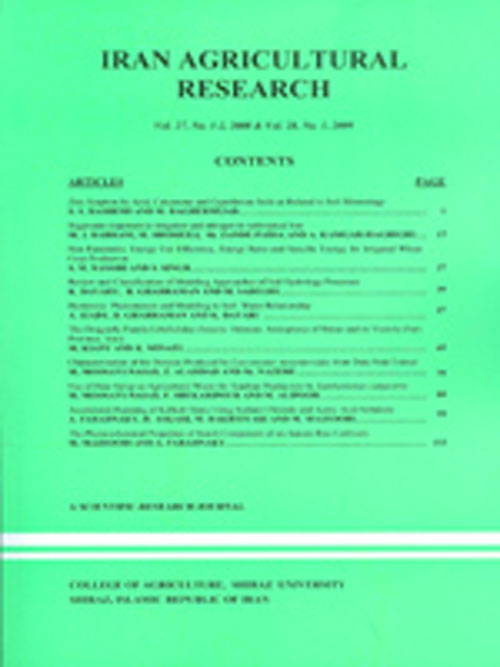Thin Layer Drying and Equilibrium Moisture Content Equations for Canola (Brassica napus L.)
Author(s):
Abstract:
fully instrumented air conditioning laboratory unit capable of controlling drying air temperature and humidity integrated with an instantaneous weighing thin layer drying system was used to investigate the thin layer drying behavior and desorption equilibrium moisture content of canola (Brassica napus L.).To this aim, freshly harvested canola samples with moisture content of about 12±0.5% (d.b.) were dried at temperature levels of 40, 45, 50, 55 °C and absolute air humidity levels of 0.005, 0.01, 0.015, and 0.02 Kg/Kg. The instantaneous grain moisture content was measured by weighing the sample periodically. Drying was continued until canola kernels reached a constant weight to obtain the hygroscopic equilibrium moisture for different combinations of drying air temperature and absolute humidity. To select a suitable model for describing the thin layer drying of canola, experimental drying data were fitted with three thin layer drying models,namely, Page, Modified Page and Two-Term Exponential models. Furthermore,four widely used desorption isotherm models including Chung-Pfost, Modified Chung–Pfost, Modified Oswin, and Modified Smith were used to fit the experimental data of equilibrium moisture content. Finally, non-linear regression analyses were run and based on the highest value for R2 and the lowest value for 2, mean bias error (MBE) and root mean square error (RMSE), the most suitable models for thin layer drying and equilibrium moisture content were determined to be Two-Term Exponential and Modified Smith, respectively.
Keywords:
Language:
English
Published:
Iran Agricultural Research, Volume:30 Issue: 1, Winter and Spring 2011
Page:
11
https://magiran.com/p1013096


